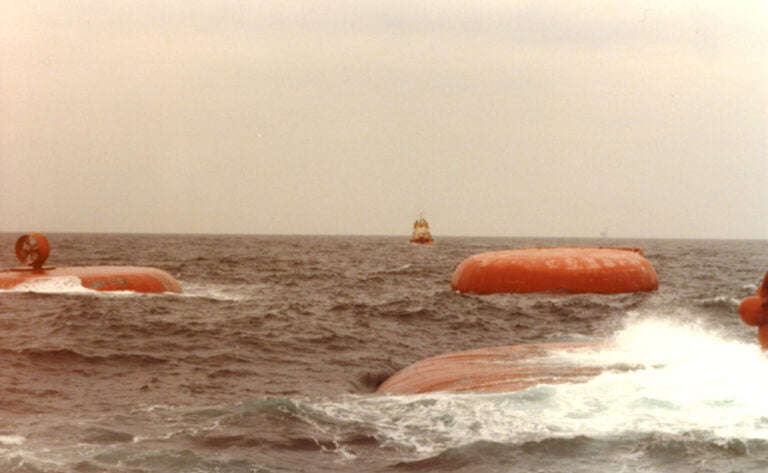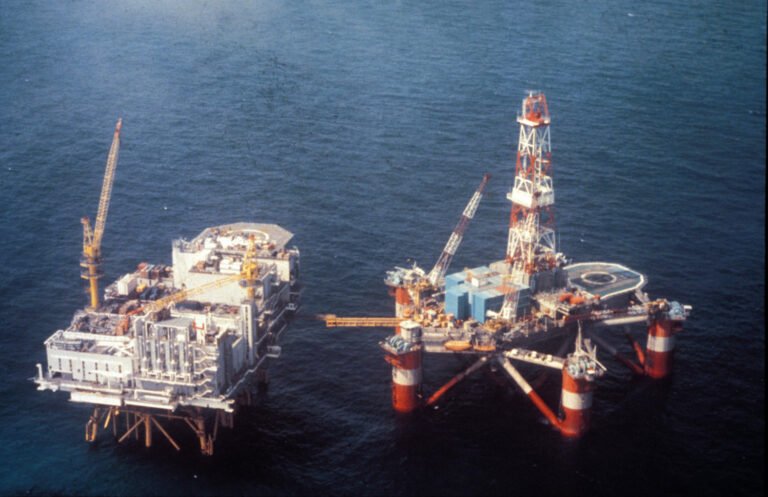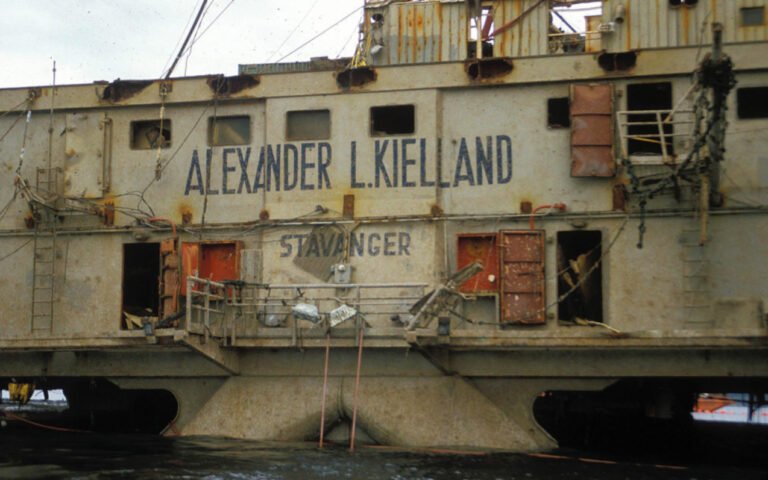The Norwegian semi-submersible drilling rig capsized while working in the Ekofisk oil field. 123 people died in Norway's worst ever industrial accident.
Working at sea on an oil rig is a dangerous profession. Despite rigorous safety standards, harsh weather conditions and the constant threat posed by the ocean mean safety can never be taken for granted.

Over the years there have been some tragic disasters on platforms. The likes of Piper Alpha, Ocean Ranger, and Seacrest are names seared into the memories of many people even with no connection to the industry.
One name that is often forgotten is Alexander L. Kielland, perhaps because it predated the other disasters. It should never be forgotten, as the disaster was actually the worst industrial accident in Norwegian history and a real turning point for safety in the Norwegian oil and gas industry.
In March 1980, the Alexander L. Kielland platform was in use as an accommodation platform for 212 workers. It was moored alongside the operational Edda platform in the Ekofisk oil field area of the North Sea.
In a bad storm, the platform broke and capsized, killing 123 workers aged between 19 and 57 died. Here is the story, and the lessons learned.
The Alexander L. Kielland platform
Not all rigs at sea are there to drill oil. Event though it was built as a mobile drilling unit, the Alexander L. Kielland was serving as an accommodation platform (known as a “flotel”) for workers on the neighbouring Edda 2/7C platform.
Built at a French shipyard and named after Norwegian writer Alexander Lange Kielland, the rig was owned by the Stavanger Drilling Company and hired out to Phillips Petroleum at the time of the incident.

The night of the accident
On the evening of 27 March, 1980, the oil rigs were being battered by driving rain, high waves of up to 12 metres and strong winds of up to 40 knots.
Read more: Norway's Most Likely Disasters
Due to the weather, more than 200 people were off-duty on the Alexander L. Kielland platform, which had been winched away from the production platform.
At around 6.30pm, several survivors reported hearing a loud bang or crack followed by a trembling. The rig began to list. What had happened? Five anchor cables had snapped, leaving just one giving the rig any kind of stability.
Just over 20 minutes later, the remaining cable snapped and the rig capsized. At this point, 130 men had gathered in the emergency meeting points of the mess hall and cinema.
In the scramble to get off the capsizing platform, four lifeboats were launched but only one was properly released from the lowering cables. A fifth lifeboat came free from the platform and was used to gather survivors.
Several life rafts were also utilised including two thrown down from the Edda platform. Nearby supply boasts were also able to rescue a few people, while a few more were able to brave the freezing water and harsh conditions to swim to the Edda platform. In total, 123 people lost their lives.

The aftermath and investigation
News of the disaster shocked everyone in Norway but particularly in Rogaland, where the majority of the victims were from. At the time, Norway had suffered several oil and gas related accidents but none were on this scale. It quickly became clear that changes were desperately needed in the industry.
One year after the tragedy, the commission formed to investigate the disaster concluded that a fatigue fracture in a support brace on one of the platform's columns was the direct cause. An inadequate weld had been overlooked and a crack formed that developed over time.
The report also found that there was enough time for most people on board the platform to have successfully escaped, had a clearer command structure been in place.
In response to the report, Norway combined the authorities responsible for overseeing offshore activity.
Five years later, it made offshore operators directly responsible for their employees’ safety. Among other things, new legislation on lifeboat release mechanisms were introduced.
“The Kielland accident was a turning point for this industry and the whole of Norway. We have worked differently on safety since 1980. With government responsibility, the structure of the regulations and not least how the responsibility of the companies has been made clear. They are responsible for safety every single day,” said Anne Myhrvold, director general of the Petroleum Safety Authority Norway.


Thank you for this. I have just been watching an episode of “State of Happiness” where this was dramatised. Such a terrible, terrible thing.
My good friends father died in this tragedy… I’m now 56 years… I was then aged 13 years and 6 months… My friend was only 12 years old when he lost his father to the Alexander Kielland… I remember trying to console my friend trying to tell him… Your dad will come home he will be ok… I can remember exactly where we were… Sadly some years later my friend took his own life… This tragedy will remain in my thoughts until my passing day… My friend is always in my thoughts… R.I.P John Snr and John (Sconn) Jnr
Watched State of Happiness and now read up about the disaster. Dramas are a perfect way to inform people of real events.
State of Happiness was a very good drama and it’s depiction of the Alexander Kielland disaster was excellent showing the horror of the situation for these men. Also a good piece of history learnt.
I was out in the North Sea the day this happened I was living on a very similar platform just a few kilometre away and was due home that day .
I will never forget how I felt thinking about the poor souls who perished that day .
I was 24 when I lost my 27 year old husband on the Alexander Kielland. It is a story that is virtually forgotten and thanks to our friends in Norway we in the U.K. are joining the fight for the truth of what happened and why there was such a huge loss of life.
I lost my husband of 36yrs on Alaxander Kielland, the whole tragedy was not handled very good at all. I heard man were sacked because he lowered
a net over the side of the Edda for people to cling on to. (dont know if this is true ) Several trawlers from Lowestoft sailed to the rig but were told to stay back although the trawlers did pick up some bodies.
Does anyone have a list of names of the men who died on the Alexander L. Kielland disaster?